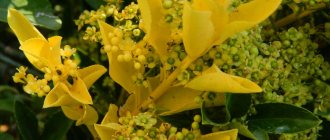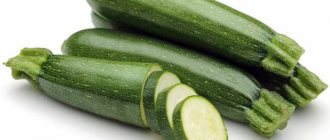- November 16, 2018
- Flowers
- ROME.
Calibrachoa is a beautiful plant that began to decorate our gardens not so long ago. Many consider it a type of petunia. It used to be like this. But after breeders added four more to the natural chromosomes of petunia, a completely new species of calibrachoa appeared. Therefore, now these are two separate types of plants, although they have many similar characteristics.
It differs from petunia in its lignified branched trunk, small flowers and leaves. Petunia cuttings grow much faster. The appearance of the first roots can be observed in 5 - 7 days, while in calabrachoa it will take several weeks.
Growing calibrachoa and caring for it are similar in complexity to caring for and growing petunia.
Description of the plant
What are the features of caring for and growing calibrochia? More on this later in the article.
But first, let’s look at what this unusual plant looks like.
Most often, flowers are grown in hanging pots, in tall flowerpots, which allow emphasizing the spherical shape of the bush and cascade.
Calibrachoa blooms with small flowers with a diameter of about three centimeters. They are shaped like petunia flowers. Despite the small size of the flowers, the bushes look simply fantastic: they look like many small bright spots that dot the green ball.
Breeders managed to obtain varieties of various shapes and colors, among which terry species, which are often confused with surfinia, are especially popular.
What does Calibrachoa look like?
Externally, the flower is very similar to petunia, in particular the shape of the flowers resembles gramophones. Their size is small, no more than 2.5-3 cm in diameter, but this is fully compensated by their large number. A million bells – this is exactly what the name of one of the species sounds like in translation (Million Bells). This name fully characterizes the appearance of the flower, which, when grown in hanging pots and flowerpots, forms bushes with long, drooping stems (about 0.5-1 m), decorated with a chic scattering of bells.
Advice! You can distinguish calibrachoa bushes from Petunia bushes by their flowers, which have a two-color color. Regardless of the main color of the corolla, its “neck” is always brown or yellow.
Initially, Calibrachoa could please gardeners only with its purple color, which is native to it. Over time, the plant attracted the attention of breeders, and they developed many hybrids of a wide range of colors. Now you can find calibrachoa with corollas of white and yellow, red and pink, crimson and brown, blue and light blue. As well as various shades of these colors. There are also double varieties, but in terms of the splendor of their flowering they are very inferior to simple calibrachoa species.
Varieties
To get a beautiful ball that shines with bright colors, you need to take good care of your calibrachoa. The variety of varieties allows you to choose exactly the type that will be combined with other types of plants.
There are plants with a simple structure, simple with veins, and terry. The first type is the most popular and is considered quite unpretentious. It includes the “kablum” species, namely the varieties “deep blue”, “white”, “deep pink”, “yellow”.
Caring for and growing calibrachoa with veins is no different from growing varieties of other groups. The most popular representatives are considered:
- "Cherry Star" - blooms with dark cherry flowers with bright yellow veins. The variety looks impressive, bright, colorful.
- "Tequila Sunrise" - blooms with yellow flowers with red streaks and veins.
- "Apricot Punch" - pleases with yellow flowers with red veins.
- 'Grape Punch' has purple flowers with dark blue veins.
The double flower is found in the “double” series. Caring for and growing calibrachoa of this species is a little more complicated, but the plant looks elegant. Among the representatives of the series there are “double pearl”, “double pink”, “double yellow”. Plants with double flowers have less lush flowering.
The difference between petunia and calibrachoa
Some garden centers offer consumers the opportunity to purchase calibrachoa under the name surfinia or ampelous petunia. For those who want to easily distinguish between plants that are similar to each other, the following information will be useful.
The difference between calibrachoa and ampelous petunia - video
Calibrachoa has flowers whose size does not exceed 30 mm. The presence of a yellow or brown throat on the throat of the flower is another indisputable fact in favor of Calibrachoa. The foliage is also significantly different from the petunia leaf blades. It is smaller than that of surfinia, only 40 * 10 mm and all covered with villi. This “edge” is present on leaves and stems. The structure of the stem is the third criterion. In calibrachoa it is not flexible like petunias, but rather tends to become lignified.
Growing from seeds
Growing calibrachoa from seeds is a troublesome task and requires special skills. This is due to the fact that the seeds of the plant are difficult to germinate. Because of this feature, it is recommended to purchase seeds with a reserve, since not all of them will germinate.
The seeds themselves are so small that they look like dust. To avoid losing precious material during sowing, it is recommended to buy a granular form. Although in this case there are some pitfalls. After all, no one can say for sure whether there is a seed in the granule.
How to propagate Calibrachoa
Calibrachoa can be propagated in two ways:
- Vegetative (cuttings).
- Seeds.
Cuttings are considered the simplest and most effective propagation method, which allows you to obtain young bushes with characteristics completely corresponding to the mother plant. Cuttings are prepared in late summer or early autumn. To do this, the apical branches, 4-5 cm long, are cut from the mother bush. A prerequisite is the presence of 5-6 leaves on the cuttings, but only the top two leaves should be left. The prepared branches are immediately planted in the ground. The distance between the cuttings should be at least 2 cm. The containers are placed in a warm and sunny place, equipped with a mini-greenhouse. The cuttings should be periodically ventilated and watered, avoiding waterlogging.
Flower growers do not practice growing calibrachoa from seeds very often. Due to the fact that this procedure is quite labor-intensive. And it’s not always possible to get high-quality planting material
Preparing for sowing
Growing calibrachoa begins with preparing the seeds and soil. If you bought seeds without granules, then before sowing they are treated with a growth stimulator. Most often they are soaked in “Epin” or “Zircon”. At the same time, they are immediately treated with a fungicide, which helps prevent the formation of fungal diseases.
Granulated seeds are not soaked, as this threatens to dissolve the shell. Typically, manufacturers pre-treat the seed with various preparations and only then cover it with a granular coating.
A ready-made version is used as soil for sowing, or you can make your own substrate. When purchasing a ready-made mixture, you should be careful about the composition. It is indicated by the manufacturer on the packaging. The substrate itself must be loose, breathable, and contain perlite, peat or vermiculite.
To prepare the soil yourself, take garden soil, peat, compost, and sand. Everything is mixed, vermiculite or perlite is added. Phosphorus-potassium fertilizers are added to the composition.
You can sow in peat tablets by first soaking them in water until completely swollen.
Care
Maintenance measures include watering or spraying, loosening the soil, and protection from pests. Feeding begins in the spring, when the plant enters the active growing season.
Watering Calibrachoa
As they grow in winter, the cuttings are watered, but not often. It is better to limit yourself to spraying the leaves and top layer so that the roots do not rot. Calibrachoa should not be confused with petunia, which loves water.
Feeding
To feed flowering plants, potassium is needed in large quantities, but it is added after the flower has grown green mass. In order not to have to worry about calculating fertilizers, it is recommended to buy combined mixtures that include nitrogen, potassium and phosphorus. For spring, you need a composition that contains more nitrogen to stimulate the growth of shoots and leaves, and then apply fertilizing with a large amount of potassium and phosphorus. Even in summer, calibrachoa leaves may turn yellow, so fertilizers are applied every week with watering.
Closer to autumn, nitrogen fertilizing should be completely stopped, but the percentage of potassium, phosphorus and microelements should be increased. This will help preserve planting material. Regular mineral fertilizers are suitable, but plants respond best to chelated fertilizers. The advantage is that they are completely absorbed by the measles system.
If chlorosis is detected, you can spray with a weak urea solution. In this case, the dosage is reduced by half so as not to burn the leaves. The events take place in the evening after sunset. If it does not help, then chlorosis is not caused by nitrogen deficiency - it is necessary to water it with iron-containing preparations.
Trimming
Cut off the shoots on which seed pods are formed. The fact is that the ripening of seed material is an energy-consuming process for a plant. At this time, the flower may lose its splendor. Pruning is carried out as the seeds appear.
Drying flower stalks are also removed so that new buds can be formed in their place. With this care, the plant will bloom until autumn.
Usually in the second half of summer, all the buds reach their potential and the shoots need to be pruned by a third or half. This stimulates the formation of new buds and promotes branching.
Wintering
After wintering, especially for beginners, not all plants survive. The main problem here is improper watering. In winter, calibrachoa growth rates differ, so nutrients and water are consumed several times less. This is a drought-resistant plant. If it is well fed with phosphorus and potassium in the fall, then there is no need to water it heavily in winter.
When to sow
Growing calibrachoa and caring for it at home begins with correctly determining the timing of sowing. Flowers are sown at approximately the same time as petunia, in late February - early March. The choice of landing site plays an important role. For sowing, take a container of at least 10 square centimeters, into which about 40 - 50 seeds are sown, taking into account their poor germination. Granulated seeds are best laid out individually, maintaining a small distance (1 x 1 cm). The seeds are buried half a centimeter into the soil. Cover the container with glass and leave it like that until shoots appear. Place the crops in the light, but not in direct sunlight.
The greenhouse is ventilated daily, and if necessary, the soil is moistened with water by spraying. Do not pour water from a watering can, as this will wash out the seeds.
The first shoots will appear in two weeks. After germination, the glass is removed and the amount of watering is reduced.
Seedling
With proper cultivation and care of calibrachoa, you always get strong, healthy seedlings. To do this, provide timely watering and feed the plants.
When the seedlings are young, watering is carried out only using a spray bottle. An excess of moisture should not be allowed, otherwise the plants will be affected by the “black leg” and they will die. The soil should dry out a little between waterings.
Calibrachoa seedlings are responsive to feeding. It is best to use complex mineral fertilizers for this. Plants respond equally well to root and foliar feeding.
When growing and caring for calibrachoa at home, it is necessary to monitor the temperature. It should be at least 20 degrees. When the same temperature is established outside, the plants begin to harden off by taking the boxes out into the fresh air.
When growing plants, greenhouses must be ventilated. This is necessary to prevent the formation of fungus.
Landing in the ground
A place for planting plants is chosen with good lighting, since calibrachoa loves light very much. Ideally, seedlings are planted in tall flowerpots or hanging flower pots, but they can also be planted in open ground by first preparing the beds. Phosphorus-potassium fertilizer, humus, and compost must be added. You cannot add fresh manure, as these flowers absolutely cannot tolerate it.
If the soil is acidic, then add lime or dolomite flour. When planting flowers in flowerpots, boxes or flower pots, it is recommended to choose the right location. During heavy rains, the flowerpots are removed under a canopy. But strong wind and draft, unlike petunias, are not a hindrance for these plants. Their dense, woody stems make it possible to place flower arrangements on balconies, terraces, and open verandas.
To get calibrachoa as in the photo, minimal care will be required. The plant is provided with moderate watering at the root, preventing water from getting on the leaves and flowers. For abundant flowering, it is necessary to periodically apply phosphorus-potassium fertilizers (every 7 - 10 days).
How to plant calibrachoa
Calibrachoa can be grown in open ground - in flower beds and flower beds, as well as indoors, using containers, pots, flowerpots, baskets and cache-pots. Flowering bushes look most impressive in hanging structures. Caring for such plantings is quite simple.
Attention! Open balconies on the upper floors of high-rise buildings are not the best place to grow Calibrachoa bushes. Strong gusts of wind can cause irreparable damage to flowering plants - dishevel and even tear fragile stems and flower petals.
When to Plant Calibrachoa
Calibrachoa loves warmth very much, so it is recommended to plant bushes in open ground in the spring, in mid-to-late May, when the threat of return frosts has passed. The air outside should warm up well, to at least 23 °C. It is recommended to sow seeds in winter, in January, to obtain seedlings.
How much should I plant calibrachoa?
One Calibrachoa bush that has reached a large size needs free space. The volume of container required for planting is calculated based on the number of planted specimens. One seedling requires from 1 to 2 liters of fertile soil. Adult bushes need at least 3 liters of soil.
Preparing the soil for planting
Calibrachoa soil needs to be nutritious, so when planting bushes it is necessary to add humus or compost to it. Also, the soil should be as light as possible, preferably with a lot of loosening agents. The optimal solution is a mixture of leaf and turf soil, sand, peat and humus.
Step-by-step process of preparing soil for planting:
- Sift the soil through a sieve, thereby giving it a loose structure.
- Add sand - 25-30% of the total mass of soil.
- Add a baking powder (for example, Agroperlite) - 30% of the total mass of the substrate.
- Water generously.
- Transfer the prepared soil to the planting container, pressing lightly to prevent possible sagging of the roots.
How many pieces of calibrachoa to plant in a flowerpot?
Only one calibrachoa bush should be planted in each flowerpot or flowerpot. If you plan to get a chic spherical Calibrachoa, then 7 plants can be planted in a flowerpot with a diameter of about 35 cm.
Pests, diseases
Most often, the plant is affected by aphids, whiteflies, thrips, and spider mites. To combat these pests, drugs such as Intavir, Fitoverm and others are used. The advantage of these funds is their complex action. Even if the gardener cannot say exactly what pest has settled on the plant, after using the proposed remedies, the chances of saving the flowers increase.
Plants may become sick throughout the growing season. Most often it is blackleg, powdery mildew, chlorosis. To prevent their occurrence, it is necessary to reduce watering and treat the bushes with any fungicides. To treat chlorosis, fertilize with fertilizers with a high iron content.
Some tips
Calibrachoa growing in pots requires more frequent watering and more fertilizer than those growing in open ground. This is due to the limited volume of soil, which leads to its rapid drying out. To retain moisture longer, some add hydrogel. As a result of its use, you may encounter the occurrence of black rot.
To make the plant bush better, pinching the seedlings above the fifth leaf. After two weeks, the procedure is repeated.
Disadvantages and advantages
Recently, flower growers have begun to give preference to flowers with simple small buds. And here calibrachoa takes first place, because the plant’s lack of small buds has turned into prosperity. Such flowers are easier to fit into compositions; they can complement any style. A big plus is the abundance of flowers.
The disadvantages include the rapid drying of the soil, which is why the plant has to be watered frequently. But don’t worry if you suddenly didn’t manage to water it on time, because calibrachoa is a drought-resistant plant. During rains, moisture should not stagnate in the flowerpots. To do this, drainage is made at the bottom.
The advantages of the plant include the variety of varieties and colors. This makes them easy to combine with other plants, for example, pelargonium.
The disadvantages include the difficulty of growing. Both the seed method and propagation by cuttings are a labor-intensive process. It’s easier to buy a ready-made plant and store it in a cool place with moderate watering in winter. When the average daily temperature reaches around 20 degrees, the plant can be moved to a permanent place in the garden. But even with proper maintenance in winter, not all bushes survive until spring: approximately 20% of the specimens die.
Calibrachoa in landscape design
Calibrachoa is valued not only for its beautiful and rich appearance, but also for its versatility. Ball-shaped bushes can be used for landscaping balconies and verandas, terraces and ridges. Calibrachoa becomes a real decoration of a garden, alley or the facade of a building when planted in flowerpots, grown in hanging baskets and flowerpots. A falling cascade of small bright flowers fascinates with its delicate beauty. Original compositions can be created by planting together several varieties of different colors.
Comment! Low-growing species of Calibrohoa can be successfully grown in open flower beds or in outdoor containers, in the form of compact, spherical bushes.
If Calibrachoa branches are not cared for and periodically pruned, they can grow quite long. Landscape designers often use this feature of the variety to create cascading compositions and beautiful living arches, which have become increasingly popular lately.











